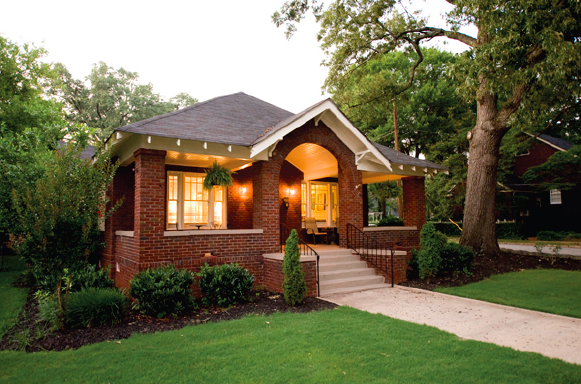According to the latest monthly Case-Shiller Home Price Index, Denver-area home-resale prices rose an average 9.1 percent in March from a year earlier. Prices were up 1.4 percent from February, reaching an all-time high. One reason for this, as you may well know, is that our inventory is still incredibly low. Last spring, when the market suddenly turned, we thought this was a fluke but a year out, this seems to be the new norm. Click here to read more in the Denver Business Journal.
What does this mean for you? SELL! I have clients who made a move up during the leaner years and if they were able to hold on to their first property and buy their second, that’s what I’ve encouraged them to do. Rental income and market appreciation made this a wise move for many and now that equity is allowing them to sell at a tidy profit. I’m all for real estate investing and for having a buy and hold strategy in your portfolio, but you need to ask yourself if that is the best use of your money right now. Sometimes an investment has peaked and/or life has changed drastically, providing other options or shall we say ‘rearranging priorities’?
Buyers and sellers are often hesitant to sell for fear of finding a replacement home and though the market is swift like a snowmelt stream, I’ve yet to move one of my clients into a hotel or a shelter. All things are negotiable.
So if you’re looking, or thinking about looking., selling or wondering if selling is your best option, I’d love to sit down and have a conversation with you.
Doesn’t Take a Crystal Ball to See Where Denver Real Estate is Headed
 Denver real estate market is strong and hot like a cup of coffee. After years of waiting for home prices to rise, the Denver real estate market is elevated. So why are buyers and sellers so hesitant to make their move? Let’s blame it on the media. Screaming headlines make money when the sky is falling.
Denver real estate market is strong and hot like a cup of coffee. After years of waiting for home prices to rise, the Denver real estate market is elevated. So why are buyers and sellers so hesitant to make their move? Let’s blame it on the media. Screaming headlines make money when the sky is falling.
For those of you who are considering buying or selling a property, understanding the big picture is critical. So let’s take a look at where in the real estate cycle the Denver market stands.
You may think this tremendous seller’s market and super tight inventory is something new, something that’s going to come to a head and suddenly erupt overnight. Not true. We are FOUR YEARS PAST THE BOTTOM of our last real estate cycle. This is a logical continuation of a market that is reacting strongly to the overselling we saw between 2007 and 2009, and finally bottomed out in 2009. It’s doing exactly what real estate market cycles do, go up and go down over long periods of time. Remember, over the past 40 years residential real estate appreciation has averaged 6 percent per year and there is no reason to think that is going to change over the next 40 years.
If you think of market cycles in the short-term, spiking and crashing over short periods of time it’s easy to see the sweet meteor of death hurling toward your swing set, but a quick look at the last market cycle shows clearly this is not how real estate works. Real estate cycles over the past 40 years, tend to move in much broader periods, 7-10 years typically. This is why predicting short-term market movements can be very difficult, whereas assuming the market will move in 7-10 cycles is a bit more realistic.
The past four years of the upswing has been largely a sellers’ market. Plummeting inventory, rising prices, nervous buyers often involved in multiple offers, and happy sellers often getting the price they wanted. Buyers can be very nervous, reading news articles, watching TV reports, and figuring the market is teetering on the brink of a crash and being afraid to buy. Rents are skyrocketing, up 8 percent this year alone and renters may confuse the short-term media screeds about this tremendous market with the long-term patterns of market cycles, thinking that the minute they buy a home the market is going to crash.

I don’t see this. And unlike my clients who may buy or sell a home ever 5-10 years, I work in real estate every day. No one can predict the real estate market with 100% accuracy. I can’t, the Federal Reserve can’t, the banks with all the money can’t, no one can. But, understanding how market cycles work, and recognizing how low our current inventory is, I can say with confidence I do not see any impending weakness in the market over the next couple of years. We are four years into what will probably be a typical 7-10 year cycle of low inventory and rising prices. I can’t tell you what the Dow Jones will finish at next Monday. I can’t tell you if the Rockies will win their fifth game of the season. I can’t tell you what the weather will be on June 15th, but I can say with confidence that real estate tends to move over predictable long-term trends, and this market cycle has a long way to go.
Denver Real Estate Market News
 There’s a lot of talk in Denver about this “crazy new real estate market”, how “everything’s different than it used to be”, and after six years of heartbreak, I say “thank god”. For those interested in real estate, and for those who might be considering buying or selling a property, understanding the big picture is critical. So here’s where it stands.
There’s a lot of talk in Denver about this “crazy new real estate market”, how “everything’s different than it used to be”, and after six years of heartbreak, I say “thank god”. For those interested in real estate, and for those who might be considering buying or selling a property, understanding the big picture is critical. So here’s where it stands.
Most people think this tremendous seller’s market and that the super low inventory is something new, or that the market’s going to suddenly erupt overnight. Neither is true. Here’s the truth: we are FOUR YEARS PAST THE BOTTOM of our last real estate cycle. Just because the Denver Post is suddenly aware of the real estate market, or Zillow writes screeching articles about the tight market in order to sell ad space don’t be fooled. It’s not new. It is a logical continuation of a market that is reacting strongly to the over-selling we saw between 2007 and 2009 (which finally bottomed out in 2009). It’s doing exactly what real estate market cycles do. They rise and fall over long periods of time, but historically (and I mean over the past 40 years) residential real estate appreciation has averaged 6 percent per year and there is no reason to think that is going to change over the next 40 years.
We tend to think of market cycles in short-terms, spiking and crashing over short periods of time, but a quick look at the last market cycle clearly shows this is not how real estate works. Real estate cycles tend to move in much broader periods, 7-10 years are typical over the past 40 years. This is why predicting short-term market movements can be very difficult, whereas assuming the market will move in 7-10 cycles is a pretty good guess. During these past four years, as we continue the rise from our low, we have seen more of a seller’s market. Plummeting inventory and rising prices drove nervous buyers into multiple offer competitions with happy sellers getting the price they want. In fact, look at Chart Y and you’ll get a great perspective of how strong our market is. You see that the metro Denver 2013 Closed Dollar Volume of all residential sales hit a new high which translates into a record amount of money in the pockets of sellers. Good times for sellers!
Many of my buyers are understandably nervous. Rents are skyrocketing (up 8% this year) but news articles and TV reports claim the market is teetering on the brink of a crash, creating a “Fear of Buying”.
So let me be clear: no one can predict the real estate market with 100% accuracy. I can’t, the Federal Reserve can’t, the banks with all the money can’t (obviously!), no one can. But, understanding how market cycles work, and recognizing how low our current inventory is, I can say with confidence I do not see any impending weakness in the market over the next couple of years. We are four years into what will probably be a typical 7-10 year cycle of low inventory and rising prices. I can’t tell you what the Dow Jones will finish at next Monday. I can’t tell you if the Rockies will win their fifth game of the season. I can’t tell you what the weather will be on April 3rd. But I can say with confidence that real estate tends to move over predictable long-term trends, and this market cycle has a long way to go.
Mid-Century Modern Home For Sale
Mid-Century Modern homes are a hot commodity in Denver. Many of them have been remodeled through the decades, often by owners who didn’t realize that what felt outdated would eventually hold the home’s value. This beautiful Mid-Century ranch home has been restored with respect for the flair and detail of 1960 without being kitchy or “retro”. Sleek lines and a serene palette make it feel young again. Situated on a hill with mountain views, this 4 bed/2 bath home is a short walk or roll to Trader Joe’s, Streets of Southglenn, Goodson Rec Center and open space. Come on by.
Denver Real Estate Market Trends
By now you know the Denver real estate market has bounced back, now let’s look at it by the record-setting numbers.
At the end of 2013 there were:
7,275 homes for sale, (down 6%).
67,550 new listings came on the market for the year, (up 12%).
67,429 homes went under contract (↑20%)
54,024 homes closed (up 17%)
The average days on market was 58 days (↓25%)
Average sold price was $306,910 (↑10%) and closed dollar volume was $16.6 Billion (↑29%). If this sounds like Realtor crack, it is.

But what does it mean for you?
1. Did ya take a look at that map? Go ahead, click on it. Remember when there was a whole lot of pink and red, lots of yellow…? I do. Now the map is predominantly green and the key shows you how much each neighborhood has improved over last year.
(If you’d like more detail about your own neighborhood, shoot me an email.)
Metrolist expert Gary Bauer observes it this way:
The inventory of active listings, homes available for sale, started a downward trend in 2011, which continued through 2013. In March, 2013, the inventory of active listings was 6,682 homes, an all time low. Active Listings continues to be a primary sustainability concern for the home market.
Home affordability declined due to median home price increases. The month’s supply of inventory started and finished the year at 2 months.
Once again, rental rates continue an upward trend and rental availability continues to decline. With declining distressed properties, foreclosures and REO, at less than 10% of the market and low active listings, new home builders will again be an alternate in the housing market. The largest number of Single Family and Condo properties sold in price range of $100,000 to $499,999 for 2013. The largest number of Single Family homes sold in the price range of $200,000 to $299,999. The largest number of Condo homes sold in the price range of $100,000 to $199,999.
Million dollar plus homes closed/sold were up 16% when comparing 2013 versus 2012. Million dollar plus home closings accounted for $1.5 Billion of the $16.6 Billion total 2013 volume.
Mortgage interest rates started to increase and then fluctuated downward to later increase again during the year, with an overall increase of approximately 1%.
And that’s good news for all of us!
Why Do I Keep Getting This Newsletter?
 Admit it. This thought has crossed your mind, hasn’t it? You’ve probably even made a mental note to ask me, or worse… unsubscribe. So what makes me send you this monthly missive? The reasons are few, but they’re mighty.
Admit it. This thought has crossed your mind, hasn’t it? You’ve probably even made a mental note to ask me, or worse… unsubscribe. So what makes me send you this monthly missive? The reasons are few, but they’re mighty.
1. Yes, I am in the business of helping people buy and sell homes and I’d like for you to think of me should that thought also cross your mind. Pretty crafty, huh?
2. To keep you up to date with the Denver real estate market, how it’s doing and where it’s headed. Like this little ditty from USA Today.
2. I believe that life is richer when experienced in community, and that a community is empowered by engagement.
3. I believe that real estate is all about story. Every home, every buyer, every seller, comes with a tale to tell, a story to reveal.
4. I have a knack for meeting interesting people who do really cool things and I want to share them with you.
And here comes the mighty…
5. Every month when I send out my newsy little newsletter, chock full o’ tips about home values and market trends, writing of the wonders of a swanky little art space, or the best place to take a burlesque dance class on a Sunday morning, you call me. You reach out via comment, Facebook, phone or email to let me know what you thought, ask me a question, or (best of all) set up some face-time. And I like that. A lot.
Building and deepening relationships, creating dialogue, drinking coffee… whatever I can do to help you put a little bump in your daily grind.
Housing Market Predicted to Rise in 2014

The National Association of Realtors just wrapped up their 2013 Conference & Expo. Chief economist for the organization, Lawrence Yun offered his insight on what to expect for the 2014 housing market: steadiness in existing-home sales over the next year as prices continue to ascend.
Based on what has happened in 2013, Yun says he expects existing-home sales to be up about 10 percent in 2013 to 5.13 million and that 2014 will hold fairly even at about 5.12 million.
We in the Denver housing market, predict continued growth in the number of homes sold, with the accelerated appreciation of 2013 to level out in ’14 to around 4 percent.
National median existing-home prices should end this year about 11% higher than 2012, while next year’s growth is expected to nearly half of that. Those who’ve been following the return of the housing market know that the past two years have shown a 20% cumulative increase in existing-home sales with prices rising an average of 18%. Incomes have not kept pace, rising between 2-4% in the same period.
“We’ve come off of record high housing affordability conditions in the past year, and are now at a five-year low, but conditions are still the fifth best in the past 40 years,” Yun said, noting that the median-income family should still be “well-positioned” to buy a home in 2014 in many areas.
Affordability, limited inventory (especially in metro Denver), stringent mortgage standards and rising interest rates will all factor into the expected gains over the coming year. Housing starts are predicted to fall short of the underlying demand, while sales of new homes are expected to total 429,000 in 2013 and 508,000 next year.
Based on Lawrence Yun’s forecasts,the top 10 markets to watch for a housing turn around in 2014 are Salt Lake City, Utah; Naples and Tampa, Florida; Atlanta, Georgia; Boise, Idaho; Houston, Texas; Charlotte, North Carolina; Denver, Colorado; Seattle, Washington; and Tucson, Arizona.



